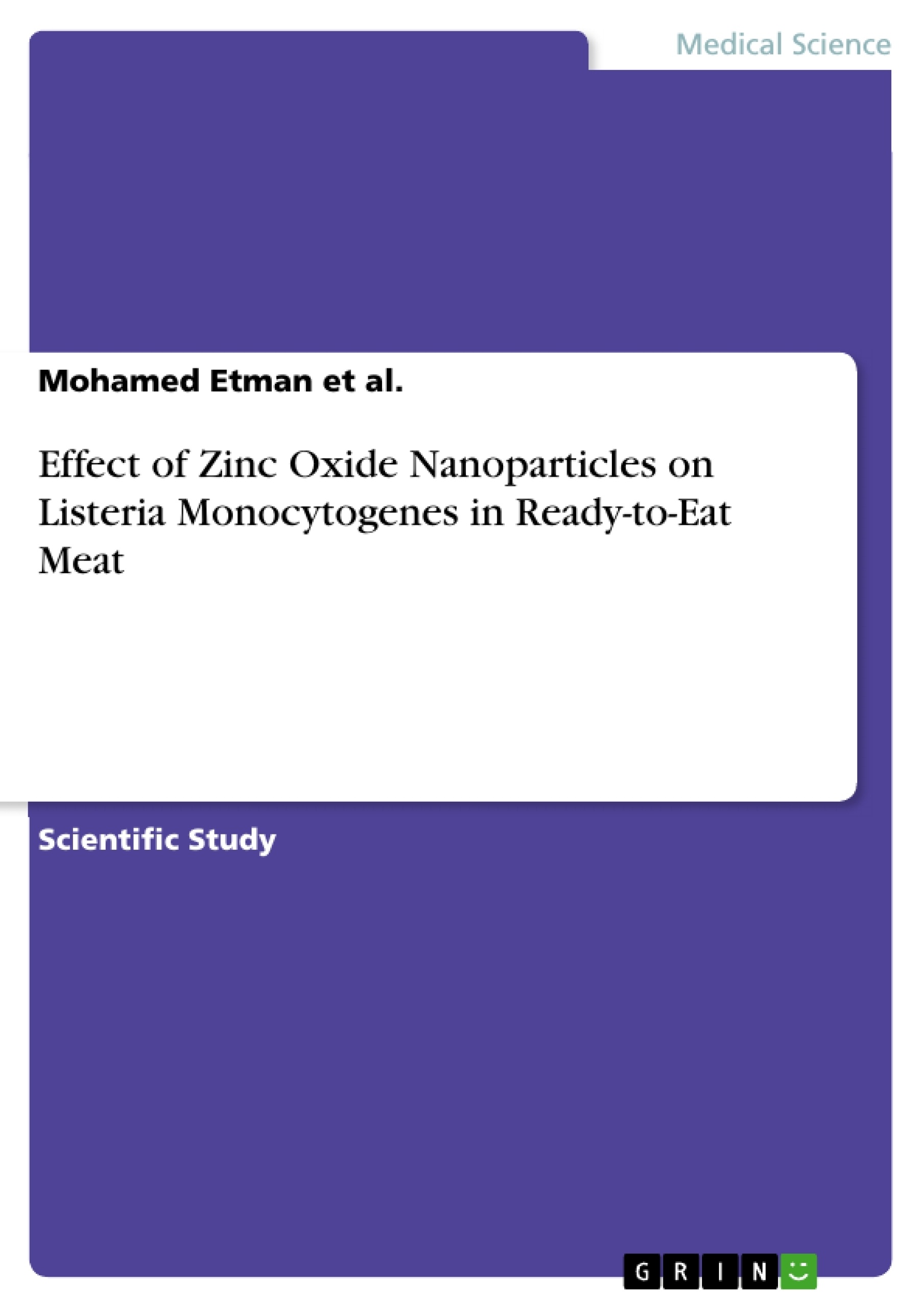The purpose of this study was investigation of the effect of zinc oxide nanoparticles (Zn O NPs) on Listeria monocytogenes in Ready-to-eat meat products, to introduce a new, cheap, safe and fast way of food preservation. This work was performed on 240 Random Samples of RTE meat products (Frankfurter, Salami, Basterma & Luncheon) ( 60 sample of each product ). There was a significant increase in Listeria monocytogenes CFU/g in the 1st control group of each product which was not treated by any concentration of Zn O NPs, while in the 2nd group of each product which was treated with 60 ppm of Zn O NPs, there was some inhibition of CFU/g , and in the 3rd group of each product which was treated with 90 ppm of Zn O NPs, there was a significant inhibition which is matching with the highest concentration of Zn O NPs used in this study .
Inhaltsverzeichnis (Table of Contents)
- Introduction
- Materials & methods
- Collection of samples (ISO-17604:2003)
- Apparatus and instruments: (ISO 7218:2007)
- Chemicals
- Listeria Reference Strain
- Selective primary enrichment medium (Half Fraser broth)(Oxoid)
- Agar Listeria according to Ottaviani Agosti (ALOA)
- Methods
- Synthesis of Nano-zinc Oxide via Sol-gel Technique
Zielsetzung und Themenschwerpunkte (Objectives and Key Themes)
This study aimed to investigate the effect of zinc oxide nanoparticles (ZnO NPs) on Listeria monocytogenes in ready-to-eat meat products, seeking to introduce a new, cost-effective, safe, and rapid method for food preservation.
- Antimicrobial activity of ZnO NPs against Listeria monocytogenes in ready-to-eat meat products
- Concentration-dependent effect of ZnO NPs on bacterial growth inhibition
- Potential of ZnO NPs as a food preservation strategy
- Safety and efficacy of ZnO NPs for food application
- Comparison of ZnO NP treatment with control groups
Zusammenfassung der Kapitel (Chapter Summaries)
The introduction provides background information on foodborne illnesses, emphasizing the significance of Listeria monocytogenes as a foodborne pathogen. It highlights the prevalence, severity, and potential consequences of listeriosis. Additionally, the introduction discusses the antimicrobial properties of zinc oxide nanoparticles (ZnO NPs) and their potential application in food preservation.
The "Materials & methods" section outlines the methodology used in the study, including sample collection, preparation of ZnO NPs, and microbiological techniques. This section details the specific materials and instruments employed, as well as the procedures followed for the synthesis and application of ZnO NPs.
The "Methods" section delves into the specific techniques used to synthesize ZnO NPs via the sol-gel technique. This section provides a step-by-step description of the synthesis process, emphasizing the optimization of preparation conditions to achieve desirable morphological structures of ZnO NPs.
Schlüsselwörter (Keywords)
The study focuses on the application of zinc oxide nanoparticles (ZnO NPs) as a potential food preservation strategy to combat Listeria monocytogenes contamination in ready-to-eat meat products. Key themes include antimicrobial activity, concentration-dependent effects, food safety, and the potential of ZnO NPs for food applications.
- Quote paper
- Mohamed Etman et al. (Author), 2015, Effect of Zinc Oxide Nanoparticles on Listeria Monocytogenes in Ready-to-Eat Meat, Munich, GRIN Verlag, https://www.grin.com/document/298350
-

-

-

-
Upload your own papers! Earn money and win an iPhone X. -

-
Upload your own papers! Earn money and win an iPhone X. -

-
Upload your own papers! Earn money and win an iPhone X. -

-
Upload your own papers! Earn money and win an iPhone X. -

-
Upload your own papers! Earn money and win an iPhone X.

